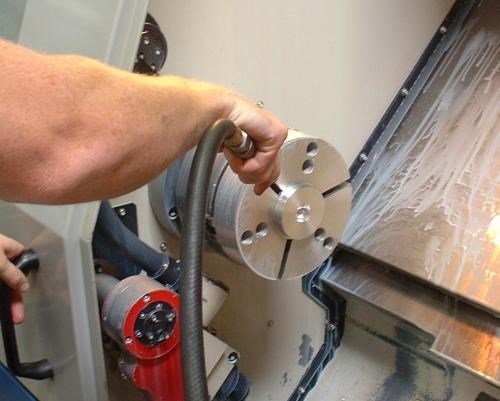Published
Ten Compressed-Air Energy-Saving Tips
Are you looking to reduce your shop’s energy consumption? Consider these tips to make your compressed air system more efficient.
Share


Autodesk, Inc.
Featured Content
View More
ECi Software Solutions, Inc.
Featured Content
View More




Hwacheon Machinery America, Inc.
Featured Content
View More
Did you know that using more than 30 psi for part and fixture blow-off is an OSHA violation?
We’re nearly complete with our August issue, which is devoted to analysis of the data generated from our inaugural Top Shops benchmarking survey. One of those features reports feedback about efforts shops are taking to become more environmentally responsible. A sidebar in that article lists 10 tips from Kaeser Compressors for reducing the amount of energy used by your compressed air system, and I thought I’d share them with you here:
1. Turn off your air compressors when not needed. A 100-hp compressor can cost $75,000 per year in energy costs (based on 8,760 hours at $0.10 per kilowatt hour).
2. Identify and fix air leaks. Studies show that 25 to 50 percent of all compressed air generated is wasted to leaks.
3. Eliminate inappropriate uses of compressed air. Using compressed air for blow-off is not only wasteful, but it can be dangerous as well. In fact, using more than 30 psi for part and fixture blow-off is an OSHA violation.
4. Apply proper controls to multiple-compressor systems. Master system controls maintain a stable system pressure. They also ensure that only the needed compressor units are brought online and that they are operating at peak efficiency.
5. Ensure that piping and storage are adequately sized. Many systems lack adequate storage. (Kaeser recommends having both “wet” and “dry” tanks.) Also, undersized piping will increase pressure drop in the system.
6. Change filters routinely to eliminate pressure drop. Every 2 psi in pressure drop reduces compressor horsepower efficiency by 1 percent.
7. Consider automatic, zero-loss condensate drains. Capacitance-sensor-operated drain traps don’t need to be monitored. Plus, they discharge only condensate, not valuable compressed air.
8. Apply variable-speed-drive compressors where appropriate. Variable-speed drive is not a one-size-fits-all solution. However, if demand varies, it can save thousands of dollars in electricity costs each year.
9. Reduce operating pressure to the lowest possible setting. Every 2 psi reduction in system operating pressure saves 1 percent in compressor efficiency.
10. Recover waste heat from coolers. A 50-horsepower compressor rejects heat at approximately 126,000 BTU per hour. How might that heat be used?
Bonus tip: Finding incentives. Are you aware of the incentives local utilities offer for improving a facility’s performance with more efficient compressed air equipment? This Utility Rebate Finder can help identify programs offered in your area.




































